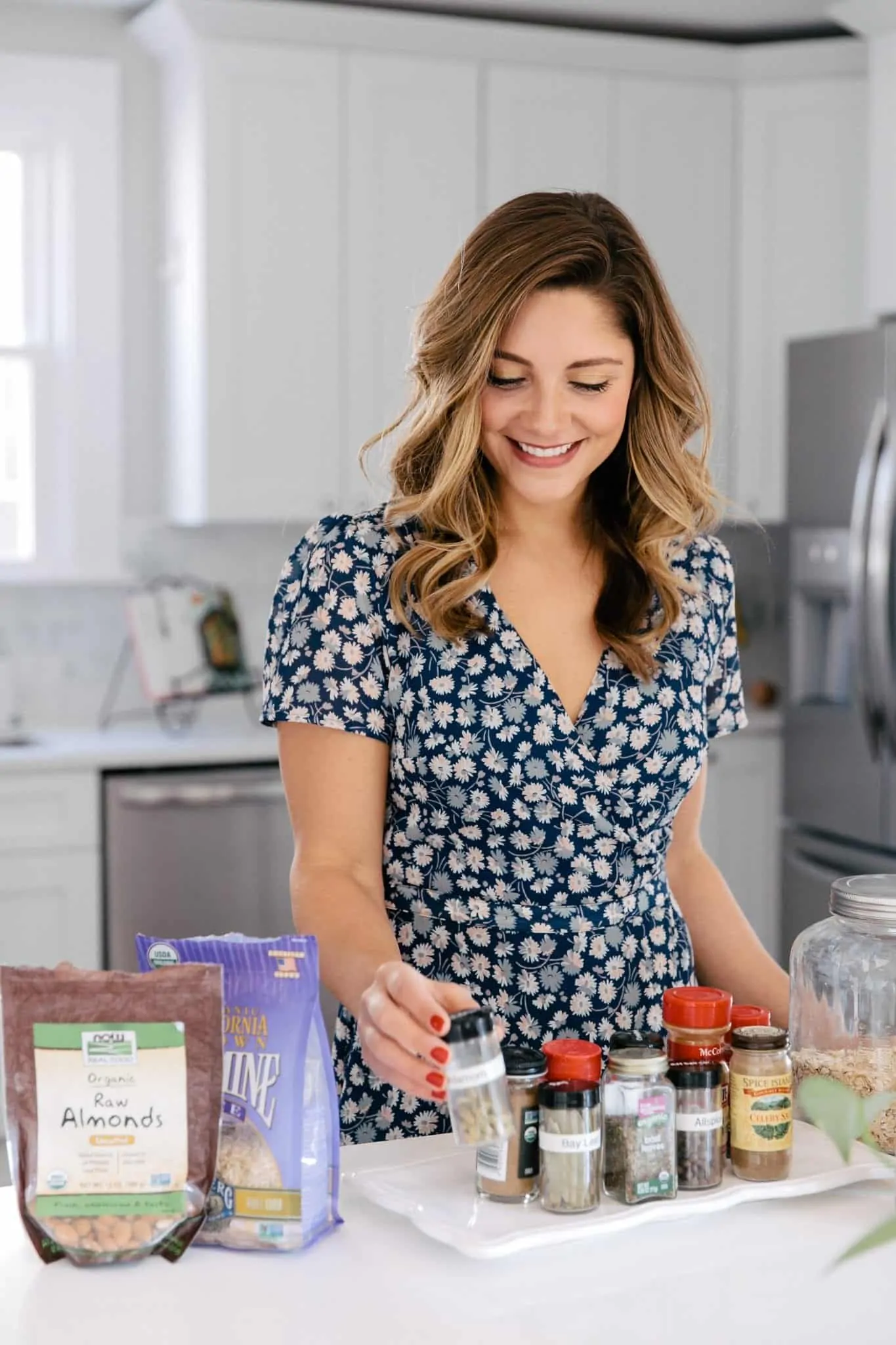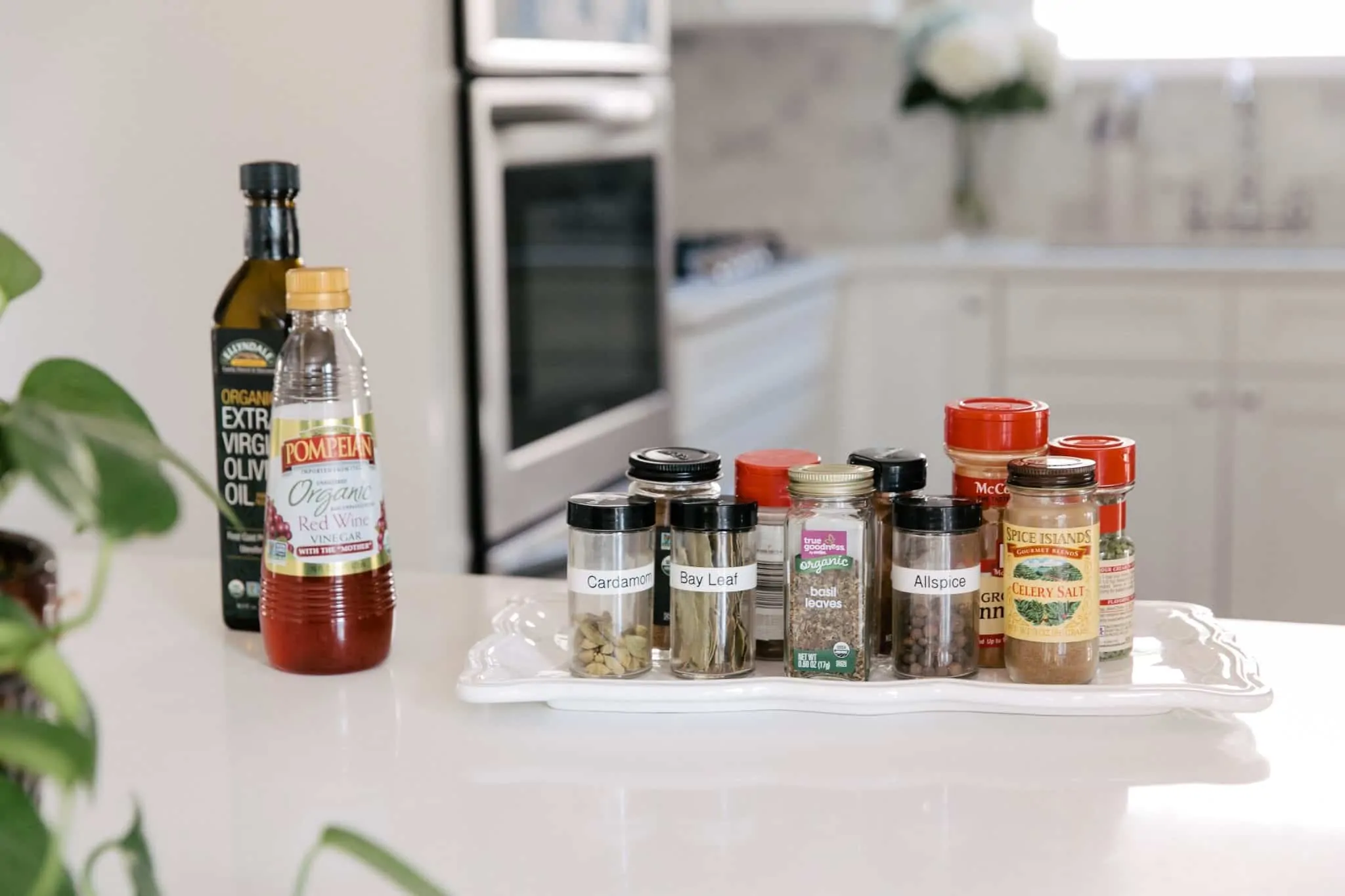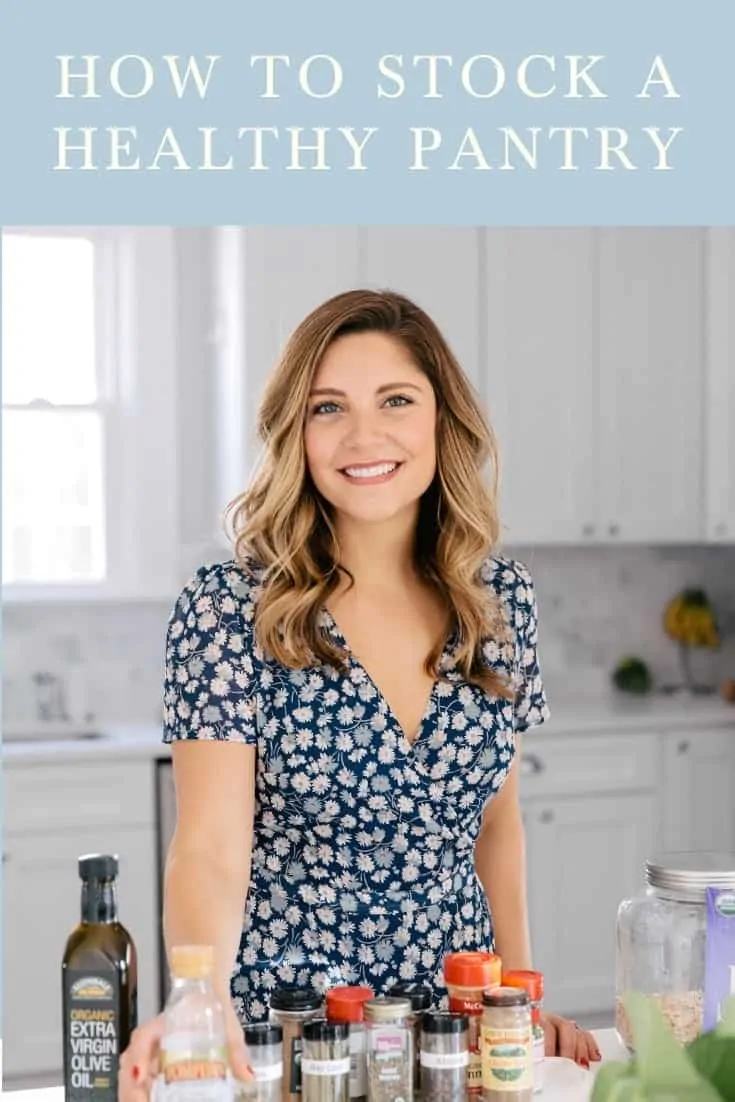
Answering a reader question with the details of “how to stock a healthy pantry” and what to have on hand for nutritious cooking.
Not too long ago, a reader posted the following question on my facebook page:
What are the must have ingredients that everyone should keep at home? I have made the excuse before that I can’t make a specific recipe because I don’t have the right ingredient(s) and have fell into the “healthy foods have too many ingredients” camp before…but maybe I’m looking at this the wrong way. Is there a set of ingredients that most healthy recipes contain?
The short answer to this question? It depends!
All recipes are a little different, and it depends on what you are trying to make. If you are building your healthy pantry, or beginning to cook more at home my first piece of advice is to start slow.
It can be a little pricey, time consuming and possibly overwhelming at the beginning when stocking an empty pantry or fridge. To help overcome this, make a plan to incorporate new items into your weekly grocery list over the course of a few weeks rather than going out and purchasing everything at once.
The next tip I want to share to help you cook more at home and incorporate new foods, more vegetables or more nutritious foods is to plan ahead.
Click Here to Download my Meal Planner and Grocery List Template
Each week, I sit down with this meal planner and grocery list and I look at commitments Brian and I have for the week. I then plan 3-4 main dish dinner meals (this allows for a clean out the fridge/leftovers night and plans with friends or a dinner out), a batch recipe to make for lunch, and a few breakfasts that we rotate between.
After I plan my meals, I survey what we currently have on hand and then I then make my grocery list based on the meals we plan on eating. This is where I plan to purchase new spices/herbs or things that need to be refilled.
That being said, there are a few things that I try to keep on hand so that nutritious eating is easy.
1. Vegetables in all forms – fresh, frozen and canned.
Fresh vegetables are wonderful – some that I purchase each week are greens, carrots, zucchini, cucumber, tomato – but many people I have worked with have shared with me they are often ambitious at the grocery store and end up purchasing more than they need. Towards the end of the week things look a little wilty and not so great and they end up throwing out the produce without preparing or eating it!
If you have wilty vegetables or vegetables stems/parts that aren’t typically eaten, you can toss them into a pot and boil them with water, salt, peppercorns, and any spices/herbs that sound good to you for a DIY vegetable broth or you can make a simple stir fry!
Frozen vegetables are great to have on hand because they last a long time and don’t require too much prep time when it comes down to getting the meal ready to eat. I recommend purchasing plain vegetables, then seasoning with flavors your family enjoys. That way, you are in charge of the amount salt, flavor, oil, and anything else you want to add.
Canned vegetables also last a long time! Simply adding canned pumpkin to a homemade chili, stew, or bowl of oats in the morning is a great way to get added vitamins, fiber and other nutrients. There are lots of questions regarding canned food, so I’ve outlined some FAQs in this post.
2. Whole grains, Starchy Carbohydrates
Starchy carbohydrates include potatoes, sweet potatoes, winter squash, legumes and beans (lentils/chickpeas/black beans), corn, peas, and whole grains (brown rice, quinoa, barley, oats, wheat, wild rice, spelt, millet). This is not a complete list, but this is meant to give you examples of foods that fall into this category.
Adding things like this to your weekly meal plan and keeping things in your healthy pantry like brown rice, quinoa, whole wheat flour, spelt flour, and/or millet are helpful when making a side dish or a more substantial plant-based meal. The pantry-stable items also last a long time.
- Brown rice
- Quinoa
- Oats
- Corn meal
- Barley
- Millet
- Buckwheat
- Chickpeas
- Lentils
3. Spices and Herbs
This is where we get ALL the flavor in our meals. A common misconception is that healthy or nutritious cooking is bland or flavorless, and when individuals give my recipes a try (on Indy Style, in cooking classes, or friends and family!) they RAVE about how much flavor the food has.
It’s hard to say what spices and herbs you will need because we all have different flavor preferences.
The spices I like to have on hand in my family (in no particular order):
- Salt
- Black pepper
- Chives (fresh or freeze-dried)
- Italian seasoning
- Dried basil
- Dried thyme
- Smoked paprika
- Cumin
- Oregano
- Parsley
- Rosemary
- Turmeric
- Bay leaves
- Cinnamon
- Nutmeg
- Garlic powder
- Onion powder
- Taco seasoning (I look for low sodium or make my own)
When cooking new-to-you recipes that call for a teaspoon or small amount of a particular spice – my tip here is to purchase your spices in the bulk section. This will allow you to purchase a small amount, so you don’t have a lot of leftover. If you end up loving the spice, you can purchase a larger container next time you are at the store!
Tip for fresh herbs: Store herbs in a glass of water in the fridge to extend their life.
4. Healthy Pantry Staples
Other items to keep in your pantry that will allow you to create a variety of nutritious, flavorful meals are:
- Nuts (almonds, peanuts, walnuts)
- Seeds (pumpkin seeds, chia seeds, hemp seeds, pecans)
- Olive oil
- Coconut oil
- Red wine vinegar
- Balsamic vinegar
- Apple cider vinegar
- Pasta sauce
- Canned tuna/salmon
- Hot sauce (I love Texas Pete’s hot sauce)
- Real maple syrup
- Baking soda
- Baking powder
- Flours (whole wheat flour, corn meal/flour, almond flour, etc)
- Nut butters (peanut butter, almond butter)
- Tamari/Soy sauce, low sodium
- Dijon mustard
- Salsa
Related Posts
Based on this post, here are a few similar ones you should check out.









Leave a comment